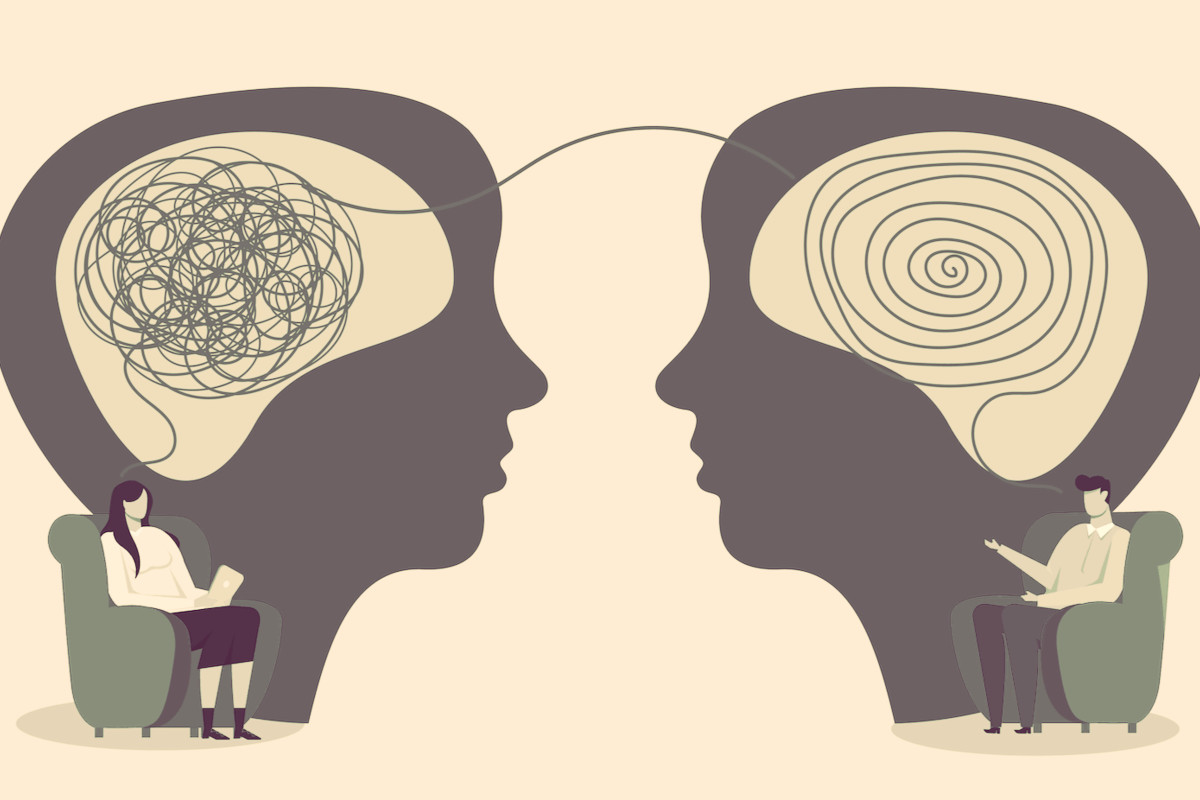

Overly attached to your therapist?
Overly attached to your therapist and desperately want to find a way out?
It's painful to feel so attached you can't imagine leaving your therapist—even when you're not making progress or your budget can no longer accommodate regular sessions.

As you know there's no guarantees that a strong attachment to one's therapist can be resolved, especially—in my opinion—when it comes to traditional talk therapy.
I've been fortunate to work with many who have been suffering from transference and have successfully worked it through. This experience has helped me to identify what needs to happen to fully resolve a transference including a few reasons why people have suffered needlessly with their therapy.
You're welcome to read this sample post from my online program called Therapy Bootcamp.
Therapy Bootcamp is a client's guide to transference.
By the time members get to this post, they've had lots of practice using the tools I mention.
(The section describing the step by step process for addressing strong attachments towards your therapist is missing from this post.)
Please note that you may come across terms that are not defined here as they are described elsewhere in the program.
This work requires an Intermediate Level understanding of the Bootcamp approach to coping with transference feelings.
How to Gain Control Over Strong Attachment (Needy) Feelings Towards Your Therapist
- Realize you've been triggered. You're overly preoccupied feeling so attached to your therapist. Notice how these worrisome feelings are manifested in your body's sensations.
- Using body-based tools to reduce your activation, allow yourself to land within a safe, centered place.
- Practice triggering yourself with small, related experiences bringing yourself back to baseline each time (and/or using Do-Overs where appropriate).
- When you're ready to deal with the main trigger event, recreate the scene with a Do-Overs tapping into the pain of a younger inner part. Be mindful and open to any words behind the pain that might arise. Be sure not to circumvent this step by over-thinking, analyzing or fabricating what might seem logical.
- Using the messaging derived from Step 4, address the needs of your inner child with a strong resource (See Creating a Guiding Light).
(The above process is elaborated inside Therapy Bootcamp)
I'll be talking about these reasons in this program. One key reason relates to the feeling of safety. With sufficient safety you can open up more easily to your therapist and thereby access deeper areas of your emotional brain.
It's in the deep areas of the brain where the change needs to happen if you're to move through your transference. You can't merely "think" your way through.
Creating safety is just the foundation though. Once your mind body senses safety, you're able to address the deep seated attachment issues.
Signs of feeling unsafe and feeling overly attached
Odd as it sounds, many people have no idea whether they’re feeling safe. I’ve had tall, strong looking guys in my office who say they feel "safe" but when it comes down to it, it's clear they're not.
You see, there's a big difference between you feeling safe and your primitive, reptilian body-based brain feeling safe.
Because when I ask them to pause and sense into the sensations in their body, they notice the unmistakable signs of fear…
- tight feeling in the chest,
- hands are locked together,
- shoulders are hunched to the shoulders (braced against a potential threat),
- ankles are turned inward,
- toes curled,
- clammy, tense hands,
- collapsed on the couch.
If these sensations or symptoms sound familiar to you, there's a chance your brain is too overwhelmed for the necessary learning to occur.
Why might you be feeling "unsafe" even when you feel your therapist is heartfelt and emotionally available? Read on . . .
A kind, heartfelt therapist—a double edged sword
When you establish a good working connection with your therapist, you often create sufficient safety to allow yourself to access feelings you might not have otherwise.

Not always though.
Sometimes the more kind and emotionally available your therapist, the harder it is to open up.
Sounds contradictory?
It makes perfect sense when you understand how memory is stored in the brain.
Intense feelings trigger memories when you felt the same way
To really understand why you might have so much fear, it's important to appreciate that the experiences underlying transferences occur early in life. Transferences surface only when the conditions are right and harken back to when you were similarly dependent.
When transference arises in therapy it's a kind of re-creation of the circumstances that you experienced back then. But now, owing to your connection, it's an opportunity to finally fulfill a certain stage in your development.

Childhood and infancy memories continue to influence our sense of self well into the future forming what's known as our inner child.
You may also know that as an infant you're totally dependent on your parents for your survival.
Your connection to them figures strongly in your day to day activities.
Alongside those heartfelt feelings towards your therapist will reside similar memories of your life when you experienced the same strong emotions as an infant/toddler.
(That's what being triggered is all about.)
So what happens if alongside those strong feelings you once felt as an infant there was some inconsistent caretaking going on (eg. mother/father's stress/anxiety, neglect, abuse, parent's depression).
The feelings associated with negative memories are going to wrap around these present day feelings and naturally make you feel a little on guard. You're worried about opening up, getting even more attached and then, as before, something bad happening (ie. like Mom or Dad not being there when you're in need).
With a transference, you're tapping into these early as yet unprocessed feelings and fears.
In other words, the stakes are high. A lot is riding on your connection to your therapist. You don't want a repeat of what happened back then when you're weren't getting certain needs met.
Making sure you have the right ingredients to resolve your transference
Fortunately, you now have the right components to make up the normal stage of development that you missed.
You get the chance to work through it and fill in the missing pieces. It’s actually not that important why you missed this stage other than to know it wasn’t your fault.
Best of all, these interactive experiences with your therapist expand your capacity to regulate emotion. (More on that exciting topic later.)
Here’s the rub though…
The conditions that 'moulded' the brain back then must be in place in order for your transference to be completely resolved. But with a good therapeutic alliance - you already have the most important condition.
What might those other conditions be?
First understand that the infant/toddler/youngster’s world is primarily a non-verbal one. In fact, the language centres in the brain don’t come online until 18 months.
When we’re young, we learn through our bodily senses. We feel, sense, touch. We move our body through space.
We don't learn through words as much as through experience. We play with objects in our environment, we explore, we experiment.
So one of the more important aspects of the work revolves around your feelings as you’re sitting there with your therapist. That's the basis for the "experience" the brain is looking for.
It’s important to manage these feelings just so, in order to have your transference fulfilled. The brain learns best under certain conditions that, if met, cement in the changes. This requires a whole brain experience of safety in the nervous system.
Feeling safe and being overly attached to your therapist
It’s essential that you feel safe in order to tolerate the intense emotions that pop up in therapy. Therapy can easily stall otherwise.
There are two main ways to feel “safe” in your session. The first one that most people are familiar with is by working through tough emotional material. All good therapy entails this.
Some folks however have a hard time even getting to first base. They can't open up enough to get to the deeper emotional material!
This can happen even with the kindest, most compassionate therapist. I know this first hand. (In fact, a I've tried to explain above, there are solid reasons why this type of therapist can make things much harder for you.)
Letting go of your therapist
As you begin to feel safer and as your therapist is able to meet you in the present, authentically and with an open heart that “attuned” care will help you to move through and resolve your transference.
If this proves to be a roadblock for you, you can learn how to find safety within yourself. That way you can learn to manage your fears enough to open up and experience what you need to in your therapy.
Remember, you can’t just tell yourself to “feel safe”. Feeling safe depends on the primitive lower brain - the reptilian lizard brain and the limbic system combined.
Creating safety isn't a one-off experience. The feeling of safety is on a continuum. To change where you exist on this continuum requires consistent effort. Remember, this "learning" can't come from reading a book. You need the right kind of experience if you're wanting to make a dent in how you sit and speak with your therapist.
You'll also need a whole different set of tools - tools you may have known about long ago - but are not forgotten. They're body-based.
Ask yourself how well you bring up touchy subjects between you and your therapist. How well do you make eye contact?
Do you routinely deflect conversations away from emotionally-laden topics for easier "these are the events happening in my life" type of sessions?
Then look around at your life. Are you able to step up and advocate for yourself?
Is people-pleasing your go-to-reaction when faced with someone else's needs that conflict with yours?
These issues require a foundation of safety even before you begin to work on them.
Dr. Susan LaCombe aks Shrinklady
Personal Musings
When I first responded to Just Me many years ago I knew I was on tricky ground. I suspected that she was having a similar experience to what I had many moons ago. I worried that her therapy would flounder as well.
Having found an approach that proved to be a life-saver for me, I also knew that it was not readily available.
Nor could I suggest she find another therapist. When you're emotionally attached as Just Me was, it could potentially re-traumatize her to deal with coping with a new therapist. Much as some therapies inadvertently do, that change could create such an emotional storm, she might never recover.
Most importantly, having formed quite an attachment to her therapist, (and based on the available research at the time) I believed the work going forward was really with her relationship with her therapist. That's where her greatest chance for success lied.
The challenge was to help her get more from her therapy. How could I help her feel safe and embrace the kind of work I know she needs.
What she needs is a roadmap, I thought.
- She needs to feel safe . . . safe enough to access deeper aspects of herself (around unmet needs and experiences) and then safe enough to speak those needs; (Sadly I don't think she's developing these skills so I anticipate it'll be a long journey for her.)
- She needs to understand the science of how change happens in the brain, specifically how emotional patterns are first laid down. (With this information it naturally leads one to know what conditions are necessary to re-wire or overwrite old patterrns);
- Once armed with the brain science she needs to know the specific techniques to change different physiological states (eg. where she's less likely to be flooded). Most importantly, she needs to use these techniques to get herself to a place where her brain is primed for change;
- Finally, she needs to know the kinds of specific healing experiences are necessary for 'filling the gap' in her development. Then, either on her own or with her therapist, she needs to use these techniques to actually create the healing scenarios her emotional self craves. At that point, her transference is well on its way to completion.
New! Rate this article (anonymously)
Was this article helpful to you? Let others know.
Thanks in advance for your feedback
Dr. Susan LaCombe, Rebel Shrink
How to work through feelings of being
overly attached to your therapist
(available inside Therapy Bootcamp)
Wondering what Therapy Bootcamp is all about?
Transference can be overcome. In Therapy Bootcamp you'll learn what's essential in identifying the exact experiences you need in order feel that you've completed a developmental task(s). This endeavor is balanced with the knowledge of how best to change the brain.
The goal is to feel you're no longer overly attached to your therapist. You may still care about your therapist, but these feelings are no longer an obsession with you.
The work requires learning how to mine your emotions for key information about emotional beliefs and unmet needs from childhood.
Then you'd proceed by creating and providing yourself corrective emotional experiences that will complete your transference.
There's some essential conditions where the brain learns best. You'll need this information as well.



